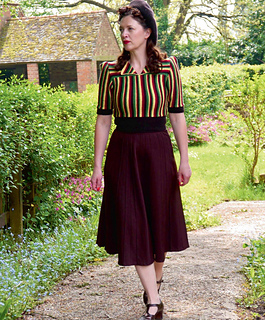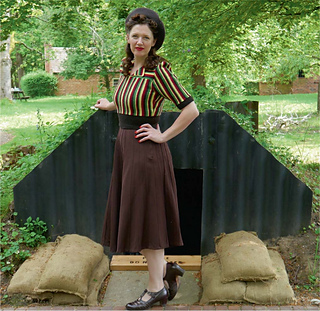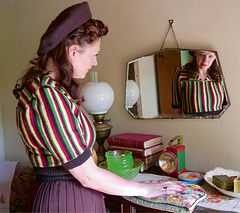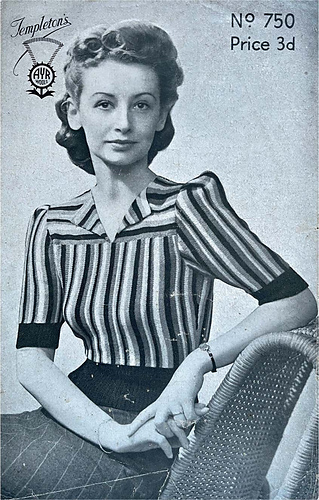patterns >  Recreating Vintage 1940s Knitwear
Recreating Vintage 1940s Knitwear
> Successful Stripes





Successful Stripes
Stripes are a most cheering and simple way of knitting up a mix of colours in any varied amounts, but when they are worked from a different angle they become striking, and the play of vertical, horizontal and diagonal lines combined in this clever design brings drama to the humble stripe!
The colours suggested by Templeton’s in their pattern are typical of this period in yellow, green, red and brown. The impact of this pattern is not only in its panels of stripes arranged in different directions, but also in its accent of one dark shade, so whichever colours you choose, including one dark contrast will be the key to recreating the effect. With the main part knitted sideways on, this gives strong vertical stripes as an interesting variation on classic horizontal stripes. The placement of the collar with its simple but striking revers is especially effective in creating a diagonal dimension.
To our eyes, the addition of brown to the palette of a vintage pattern immediately brings a feel of that era to a knitted garment, but we should not assume that knitters of the time did not revel in bright colours as well as more muted earth tones. The model has been recreated using the colours suggested to include a rich dark brown, which enhances the other brighter colour.
The clashes and surprises of colour we sometimes see in original knitwear that has survived from those years – bearing in mind knitted garments were probably from necessity worn until they fell apart – were all part of the Make Do mindset. So you can be as unconventional as you wish with the colours to make up this bold, beautiful design!
Materials
- 150 g (5 oz) in dark MC
- 100 g (3.5 oz) mid colour
- 100 g (3.5 oz) light contrast
- 100 g (3.5 oz) bright contrast
- 1 pair 3 mm/11 needles
- One 3 mm crochet hook
14141 projects
stashed
16068 times
- First published: June 2025
- Page created: October 1, 2025
- visits in the last 24 hours
- visitors right now




